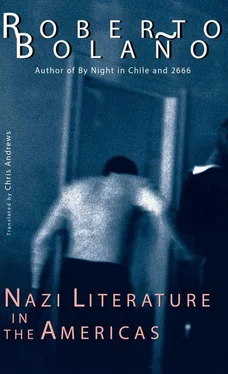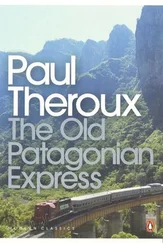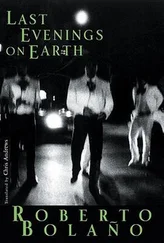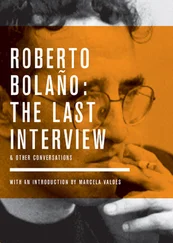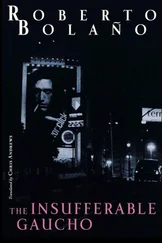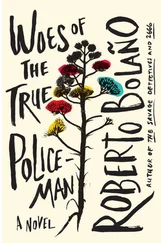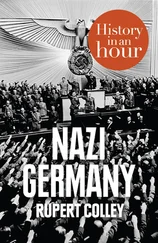Then he went completely crazy and Cunning occupied every nook of his body. He had money, fame, and good lawyers. He had radio stations, newspapers, magazines, and television networks. And he had robust good health, until one midday in March 2017, when a young African-American man named Baldwin Rocha blew his head off.
THOMAS R. MURCHISON, alias THE TEXAN
Las Cruces (Texas), 1923–Walla Walla Prison (Oregon), 1979
Murchison’s life was marked from an early age by incarceration. Con-man, car thief, drug dealer and all-round opportunist, he dabbled in a broad range of delinquent activities without developing a particular specialty. It was not ideology that brought him into contact with the Aryan Brotherhood but his repeated prison spells and an implacable will to survive. Given his frail constitution and temperamental aversion to violence, his existence would not have been viable without the support of a group. Although never a leader, he had the honor of establishing the first literary magazine to serve as an organ for the Brotherhood, which he always referred to as “an order for knights of misfortune.” The first number of Literature Behind Bars , edited by Markus Patterson, Roger Tyler and Thomas R. Murchison, was printed in 1967 at the Crawford penitentiary in Virginia. As well as letters, and news from the prison and Crawford county, the magazine, made up of four tabloid pages, contained some poems (or song lyrics) and three stories. The stories, signed “The Texan,” were widely praised: burlesque and fantastic in tone, they portrayed members of the Brotherhood, prisoners or ex-prisoners, fighting the Forces of Evil, in the guise of corrupt politicians or aliens from outer space cunningly disguised as human beings.
The magazine was a success, and in spite of some official opposition set an example for prisoners in other institutions. Murchison’s protracted and largely hapless criminal career allowed him to contribute to most of the resulting publications, whether as an active editorial board member, or as a correspondent in another prison.
During his brief periods of freedom, he barely glanced at the newspaper and tried not to associate with ex-prisoners from the Brotherhood. In prison he read Western novels by Zane Grey and others. His favorite writer was Mark Twain. He once wrote that penitentiaries and jail cells had been his Mississippi. He died of pulmonary emphysema. His work, published piecemeal in magazines, consists of more than fifty short stories and a seventy-line poem dedicated to a weasel.
Napa, California, 1950–Los Angeles, 1997
Widely regarded as the best writer of the Aryan Brotherhood, and one of the best Californian poets of the late twentieth century, John Lee Brook learned to read and write in the cold classrooms of a prison at the age of eighteen. Up until then his life could be described as a series of misdemeanors without rhyme or reason: normal enough behavior for a poor, white, Californian teenager from a damaged family (father unknown, mother still a kid when she got pregnant, working in poorly paid jobs). Having acquired literacy skills, John Lee Brook became an entirely different kind of criminal: he got into drug dealing, pimping, stealing luxury cars, kidnapping and assassination. In 1990 he was accused of the murder of Jack Brooke and his two bodyguards. At the trial he began by proclaiming his innocence. But surprisingly, ten minutes after climbing into the witness box, he interrupted the attorney, admitted all the charges and declared himself guilty of four unsolved and by then all but forgotten murders. The victims were the pornographer Adolfo Pantoliano, the porn star Suzy Webster, the porn actor Dan Carmine, and the poet Arthur Crane. The first three had been killed four years before the trial; the fourth in 1989. Brook was condemned to death. After various appeals, supported by influential members of the Californian literary community, he was executed in April 1997. According to eye witnesses, he spent his last hours very calmly reading his own poems.
His body of work, which comprises five books, is soundly built; it echoes Whitman, makes abundant use of colloquialisms, and has strong affinities with the new narrative poetry, while remaining open to other North American schools and trends. His favorite themes, which recur with a sometimes obsessive frequency throughout his work, are the extreme poverty of certain sectors of the white population, African Americans and sexual abuse in the prison system, Mexicans (always portrayed as diminutive devils or mysterious cooks), the absence of women, motorcycle clubs considered the inheritors of the frontier spirit, gangster hierarchies on the streets and in prison, the decadence of America, and solitary warriors.
The following poems merit special attention:
—“Vindication of John L. Brook,” the first of a series of torrential texts, all more than 500 lines long, which the author used to describe as “broken novels.” In the “Vindication” Brook is already fully formed as a poet, although he was only twenty when he wrote it. The poem is about the diseases of youth, and the only proper way to cure them.
—“Street without a Name,” a text in which quotations from MacLeish and Conrad Aiken are combined with the menus of the Orange County jail and the pederastic dreams of a literature professor who taught classes for the prisoners on Tuesdays and Thursdays.
—“Santino and Me,” fragments of conversations between the poet and his parole officer, Lou Santino, relating to sports (which is the most American sport?), whores, the lives of movie stars, and prison celebrities and their moral authority both inside and outside.
—“Charlie” (one such prison celebrity), a brief and “concrete” but nonetheless affectionate portrait of Charles Manson, whom the author met, it seems, in 1992.
—“Lady Companions,” an epiphany featuring psychopaths, serial killers, various mentally deranged individuals, bipolar sufferers obsessed with the American dream, sleepwalkers and stealthy hunters.
—“The Bad,” an insight into the world of natural born killers, portrayed by Brook as “Ignoble beings children possessed by will in an iron labyrinth or desert Vulnerable as pigs in a cage full of lionesses. .”
This final poem, dated 1985 and published in his third book of poetry ( Solitude , 1986), was the subject of two controversial studies in the Southern California Journal of Psychology and the Berkeley Psychology Magazine .
THE FABULOUS SCHIAFFINO BOYS
Buenos Aires, 1948–Buenos Aires, 1982
It is probably true to say that no poet has ever been more diligent than Italo Schiaffino, not among his contemporaries in Buenos Aires at any rate, in spite of which was he was eventually overshadowed by the growing reputation of his younger brother, Argentino Schiaffino, also a poet.
The boys came from a humble family, and there were only two passions in Italo’s life: soccer and literature. At fifteen, two years after leaving school to work as an errand boy in Don Ercole Massantonio’s hardware store, he joined Enzo Raúl Castiglione’s gang, one of the many groups of Boca Juniors hooligans that existed at the time.
He soon made headway. In 1968, when Castiglione was imprisoned, Italo Schiaffino took over the leadership of the group and wrote his first poem (his first recorded poem, in any case) and his first manifesto. Entitled Cower, Hounds! , the poem is 300 lines long, and his friends from the gang could recite the highlights by heart. Basically, it is a war poem; in the words of Schiaffino, “a kind of Iliad for the Boca boys.” A thousand copies were printed in 1969 with money raised by subscription. The edition contained a preface by Dr. Pérez Heredia in which he welcomed the new poet to the Argentinean Parnassus. The manifesto was a different matter. In five pages, Schiaffino outlined the situation of soccer in Argentina, lamented the crisis, identified the guilty parties (the Jewish plutocracy, which hadn’t produced a single good player, and the Red intelligentsia, responsible for the nation’s decadence). He indicated the danger and explained the ways to exorcize it. The manifesto was called The Time of Argentinean Youth , and in the words of Schiaffino it was “a kind of Latin American version of von Clausewitz, a wake-up call to the nation’s inquiring minds.” It soon became obligatory reading among the hard-line members of Castiglione’s old gang.
Читать дальше
